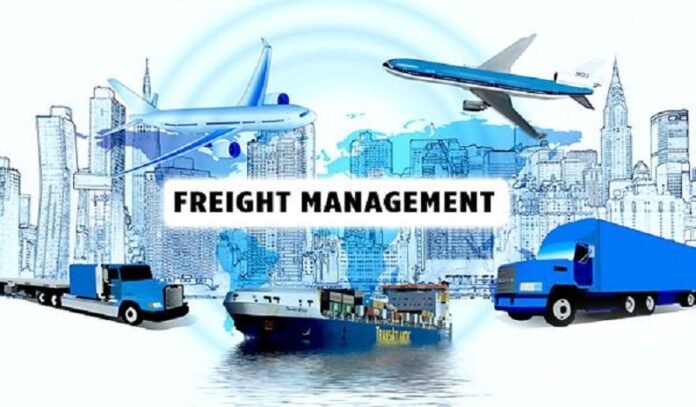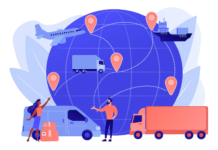Like other sectors, the logistics industry is also evolving to cope with technological advancement. With the effective integration of modern automation tools, logistics companies can now serve multiple clients efficiently. Industries such as e-commerce are reaping the direct benefit of advancement in freight management. Moreover, adopting new technology and sustainable business practices is not an option anymore but a necessity.
In this article, we will discuss such vital trends and innovations in freight management that every business needs to embrace.
Top 5 emerging trends in freight management
Automation
With the introduction of advanced transport management systems, managing shipments has become a cakewalk. This tool has automated various tasks such as order management, transportation, and delivery. The involvement of AI and Machine learning has drastically reduced manual labor, risk, and costs associated with freight management.
With the help of technology, freight management companies such as Freight People can collaborate with multiple carriers. Based on the type of shipment and delivery location, they can easily identify the most economical and viable option for you. Furthermore, the pooling of resources is the best advantage of technology integration in freight management.
In addition to transportation, automating manual processes in warehouse management is another milestone. Some repetitive tasks in warehouses are not only time-consuming but risky, too. Automatic and semi-automatic machinery has streamlined these laborious tasks.
Data Analytics
Data-driven decisions are revolutionizing freight management. Based on historical and present data, logistics companies can predict demand, select carriers, optimize routes, and enhance the delivery experience.
Further, data analytics plays a vital role in identifying shortcomings and risks. Accordingly, companies can adjust their strategy to minimize errors and enhance performance. It is also helpful in making informed decisions based on factual data.
Sustainability
Sustainable and green logistics is the newest trend, encouraging more and more businesses to reduce their Corporate Carbon Footprint (CCF) of freight operations while improving their operational efficiency.
The major objectives of this approach are to reduce gas emissions, implement waste management policies, and conserve resources to reduce hazardous impacts on the environment. That said, businesses are switching to green and sustainable logistics by:
- Optimizing routes to reduce fuel consumption
- Adopting alternative fuels
- Using electric or hybrid vehicles
- Switching to eco-friendly packaging alternatives
Therefore, to keep pace with the newest trends in logistics, businesses should consider sustainability and green logistics as they benefit the environment, lead to cost savings, and boost positive brand image.
Real-time tracking
It is another significant transformative trend in modern freight management. It encompasses the usage of several modern technologies to offer continuous, real-time visibility into the location, status, and condition of the shipment throughout its journey.
Real-time tracking is a powerful trend rapidly gaining momentum as it leads to enhanced efficiency, transparency, and customer satisfaction in the supply chain.
Let’s explore how real-time tracking is reshaping freight management:
- Enhanced visibility about physical location, temperature, humidity, vibrations, and other conditions. This data transparency helps businesses monitor their shipments.
- Enhances operational efficiency by enabling businesses to plan freight management accurately and precisely.
- Enables businesses to promptly address issues or anomalies, thereby minimizing spoilage, damage, or loss risks.
- Enables businesses to offer real-time tracking options to their customers. They can know accurate and timely information regarding the whereabouts of shipments, which is a game-changer in meeting customer experiences.
- Aids businesses with risk management, prevention, and security of high-value or sensitive shipments
Multi-modal transportation solutions
Nowadays, leveraging a mix of transportation modes like road, air, sea, or trains is another transformative trend in freight management. Such a multi-modal transportation solution optimizes costs and transit time and helps businesses come up with an integrated and efficient logistics strategy. In addition, this is an approach that is immensely beneficial in mitigating associated disruptions from a single mode of transport.
Let’s explore how this newest trend is reshaping freight management are:
- Enables businesses to seamlessly integrate and optimize the strengths of each mode of transportation, overcoming delays or complications.
- Helps businesses save on overall transportation expenses, given the opportunity to go with the most cost-efficient mode of transportation for each and every leg of the journey.
- Helps businesses reduce their carbon footprint by opting for rail and sea modes of transport which emit fewer greenhouse gases per ton-mile
- Highly beneficial for international freight shipments. Companies can combine different modes of transport to efficiently move goods across continents.
Endnote
Today, the world is defined by interconnectedness and rapid changes; effective freight management isn’t a standalone function but a strategic imperative for businesses. Embracing the dynamic field of freight management helps businesses stay relevant, up-to-date, and forefront in an ever-evolving industry.
By seizing the trends and innovations mentioned in this article, businesses can elevate their freight management strategies from conventional to cutting-edge and ensure progress toward a resilient future.
Read Also: 5 Tips to Live in a More Sustainable Home



































































